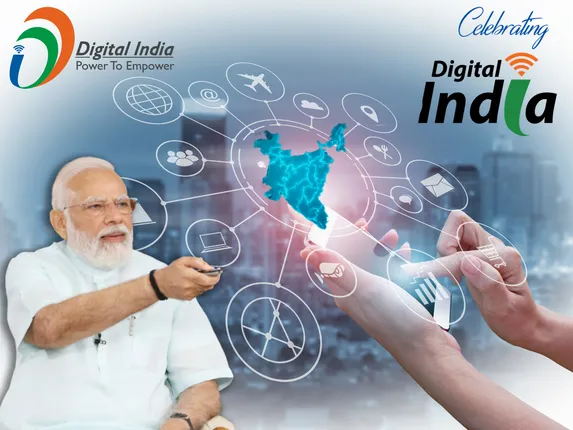Prime Minister Narendra Modi launched the Digital India project on 1st July 2015. It is an effective scheme to transform India for better growth and development of the people and country. Digital India week (from 1st July to 7th July) was inaugurated by the PM on Wednesday in the presence of senior ministerial colleagues and leading company CEOs. It aims to give India a digital push for good governance and more jobs. The PM of India has tried his best to digitize India’s campaign to bridge the gap between government services and the people. Digitization was the need to be implemented in India for a bright future and to grow more than any other developed country. Following are the benefits of the digital India campaign:
- It makes it possible to implement a digital locker system, reduce paperwork by minimizing the usage of physical documents, and enable e-sharing through registered repositories.
- It is an effective online platform that may engage people in governance through various approaches like “Discuss, Do and Disseminate.”
- It ensures the achievement of various online goals set by the government.
- It makes it possible for people to submit their documents and certificates online, reducing physical work.
- Through the e-Sign framework, citizens may digitally sign their documents online.
- It may ease the important health care services through an e-Hospital system, such as online registration, doctor appointments, fee payment, online diagnostic tests, blood check-ups, etc.
- It benefits the beneficiaries through National Scholarship Portal by allowing application submission, verification process, sanction, and disbursal.
- It is a big platform that facilitates the efficient delivery of government or private services all over the country to its citizens.
- Bharat Net program (a high-speed digital highway) will connect almost 250,000-gram panchayats of the country.
- There is a plan of outsourcing policy also to help in the digital India initiative.
- For better management of online services on mobile, such as voice, data, multimedia, etc., BSNL’s Next Generation Network will replace the 30-year-old telephone exchange.
- National Centre for Flexible Electronics will help in the promotion of flexible electronics.
- The BSNL has planned large-scale deployment of Wi-Fi hotspots all across the country.
- There is a Broadband Highways to handle all the connectivity-related issues.
- Open access to broadband highways in all the cities, towns, and villages will make possible the availability of world-class services with the click of the mouse.

